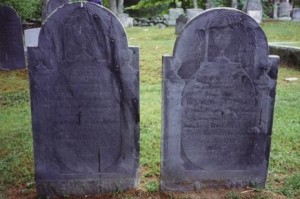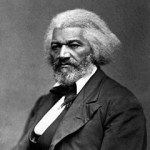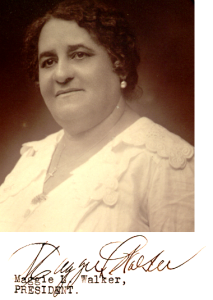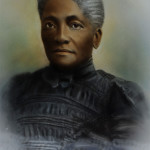
Final Resting Place of Amos and Vilot Fortune
Today we break from African-American firsts to tell the story of a man whose life was exceptional because of his own resilience. Amos Fortune was likely born in 1710 in Africa’s Gold Coast (now Ghana). In an era when the average person who survived their teenage years lived to be 70, Fortune survived until 91 in spite of the hardships and deprivations of slavery.
Amos was probably brought to America aboard the White Falcon, a slaver that put into port at Boston in July, 1725. There is no other record of him until 1752 at which point he belonged to Ichabod Richardson, a tanner in Woburn, MA (just north of Boston). He was likely first bought by a bookbinder named Fortune. The assumption is made because of the conventions followed in naming slaves and the fact that Fortune managed to learn to read, write and do arithmetic despite being enslaved. His skill as a binder is attested to by the fact he was commissioned to bind the books of the Jaffrey Social Library. That said, there is always the possibility that he simply pre-empted Frederick Douglass’ ingenuity. Richardson promised Fortune his freedom a number of times but died leaving an unsigned will— the desire to preserve his income from Fortune’s labor seems to have overridden his conscience. After Richardson’s death in 1769, Fortune would buy his freedom. He was 60 years old.
It is at that ripe old age that Fortune began to construct his own life. In just five years, he earned enough to buy a half-acre of land in Woburn on which he built a house. He also maintained the trust of African Americans, slave and free, and acted as an agent for several of them. He bought the freedom of a number of other slaves including two women whom he married (the first died soon after being freed) and a young child that he adopted.
In 1781, he moved to Jaffrey, New Hampshire with his second wife, Vilot (the his is literal, he was legally her owner). They set up a tannery, raised a barn and built another house on a 25 acre plot that they bought alongside a road now known as Amos Fortune Road. Fortune’s tannery drew business from as far as eastern MA. In time, despite having been warned out by Jaffrey because they presumed he would have become a charge on the town, Fortune would become the town’s first benefactor and a founder of the Social Library in Jaffrey. The bindings he did for the library remain intact over 200 years later.
His gravestone reads:
Sacred to the memory of Amos Fortune, who was born free in Africa, a slave in America, he purchased liberty, professed Christianity, lived reputably, and died hopefully. Nov. 17, 1801, AET. 91.
Vilot’s reads:
Sacred to the memory of Violate,[sic] by sale the slave of Amos Fortune, by marriage his wife, by her fidelity his friend and solace, she dies is widow Sept 13, 1802, AET. 73
In 1955, Governor Lane Dwinell (NY) would declare February 20th Amos Fortune Day. We will post the text of that declaration next Wednesday.
In honor of Black History Month, our regular Tuesday and Friday posts will highlight black entrepreneurs who have displayed exemplary success and resilience.




